I’m obsessed with History’s drama series, Vikings. I only started watching because I enjoy a bit of the old ultraviolence, but now I’m emotionally involved to an embarrassing degree and spend my time praying for Athelstan’s safety. That poor child has been through enough. All the hacking and slashing has piqued my interest, but, as fans of the show have pointed out, Vikings is only tenuously based on real events. We visited The British Museum’s wildly popular new exhibit – Vikings: Life and Legend – to learn more.
Were the Vikings one gigantic black metal band, or a culture as nuanced and refined as any other? Life and Legend doesn’t try to force you into either camp. What it does do is present the way the Northmen interacted with the cultures they encountered – the Franks, the Slavs, the Anglo-Saxons and beyond – and the evidence isn’t always what most visitors are expecting. Surviving poems prove it wasn’t all about violent conquest:
What’s this talk of going home?
My heart is in Dublin,
And the women of Trondheim won’t see me this autumn.
The girl has not denied me pleasure-visits, I’m glad;
I love the Irish lady as well as my young self.
– Magnus ‘Barelegs’ Olafsson, king of Norway (11th century)
These and other fragments challenge the image of the Viking people as marauding beasts. Sometimes they feel strangely familiar. Take, for instance, this public health announcement:
A man shouldn’t clutch at his cup, but moderately drink his mead.
A thousand years on, and Europe still isn’t listening.
However, if it’s indiscriminate bloodshed you’re after, there’s a lot to take in. We handled a 10th century axe-head, which the attendant helpfully informed us “was for killing people”. Then there was the absolute cutting-edge of weapon technology: Ulfberht swords. So powerfully made and sought-after were Ulfberhts, counterfeits were churned out like dubious Rolexes. There’s a documentary on Youtube about the staggering amount of effort put into making these swords, topped by a striking signature hammered into the blade – one slip and the sword was ruined. However, if you didn’t fork out for the British Museum’s £4.50 audio guide, you’d have walked past the swords without the slightest idea what they were.
It’s always good to see the lives of women represented, especially when it’s not limited to the domestic. We loved the section on sorceresses. These women possessed the gift of prophecy and were feared and respected in equal measure, making their grave goods particularly fascinating. Although the spiritual practices of different Viking settlements varied, there was a widespread belief in shapeshifting. Men turned into bears and wolves, but women’s spirits were allied to more furtive creatures like birds and fish, offering an interesting window into the Viking gender divide.
Near the sorceresses’ wands and finery, there was a tiny statue of a figure wearing female clothing, but labelled as ‘probably’ Odin nonetheless. This made us wonder if (much like female skeletons found buried with weaponry and consequently classified as male) we’re projecting our own gender theory onto history for want of further context. As the Vikings were a largely oral culture, we’ll probably never know.
Speaking of skeletons, bones were displayed sparingly and to great effect. Turning a corner, visitors come across a pile of skeletons divested of their heads – an entire Viking ship’s crew, dumped in a mass grave in Weymouth. The bodies were laid out as they were found, sprawled, face-down, fingers missing, suggesting their hands weren’t tied before execution. We’ve all seen human remains in museums, but this was unusually visceral.
All this was fascinating – if you got close enough. Our major criticism was echoed by everyone we know who’s been to the exhibition: the overcrowding. Many of the smallest and most delicate pieces were by the entrance, creating a bottleneck of bodies. At times it was impossible to see exhibits, and most of the labels were placed below the cases, meaning only the visitors with the sharpest elbows could read them. I’m 6’1″, and I struggled. By the time the room opened up to reveal the breathtakingly gigantic Roskilde 6 ship, most visitors were too stressed to enjoy it.
I love The British Museum, but they should have known better than to cram people in like that. However, if you’re tall or determined, Vikings: Life and Legend is still on until the 22nd of June 2014.

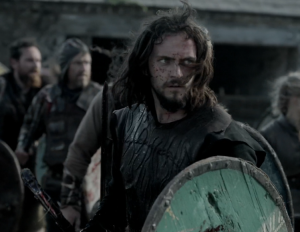
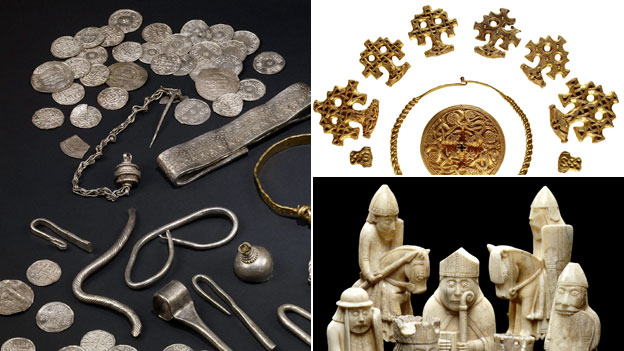
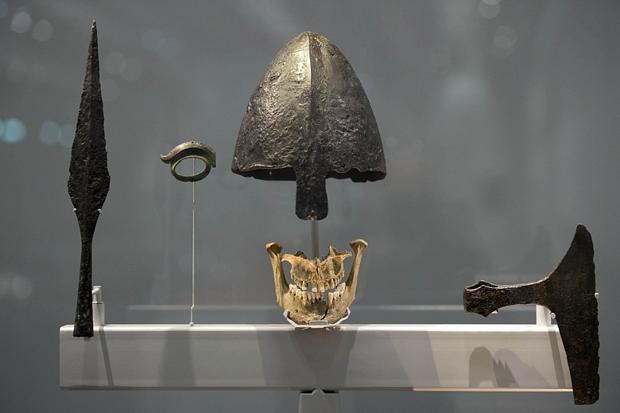
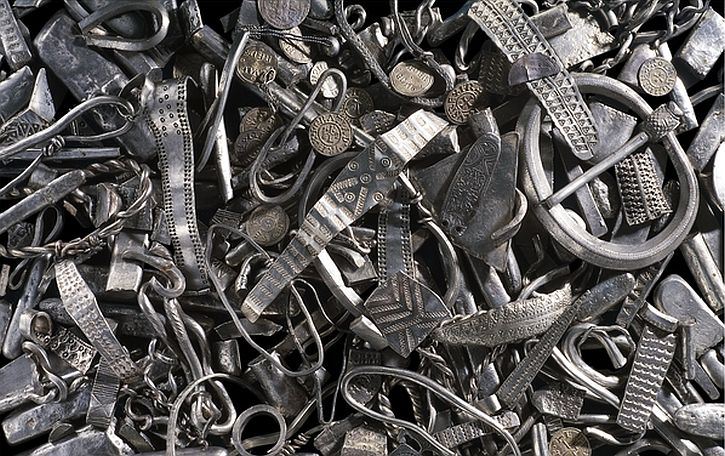
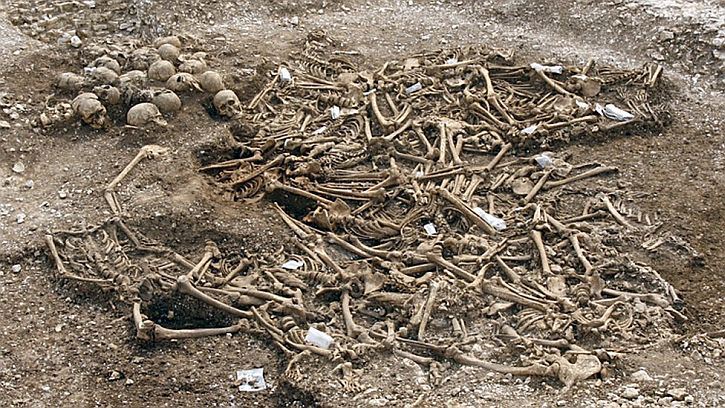
Tall, determined AND a Viking, perhaps?! ;D
Sounds quite fun though – I like the way they’ve laid out those skeletons. It reminds us of the brutality of people’s rather short, violent lives at that point, but balanced by the love poem… awww…..
So is “Vikings” a bit like “The Tudors”?
Yes, they’re both written by Michael Hirst, so take with a gigantic pinch of salt. But Vikings has some terribly pretty people in it as well as fun swordplay, so I’m happy to go where it leads me.